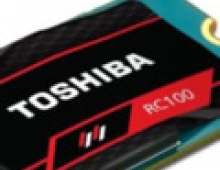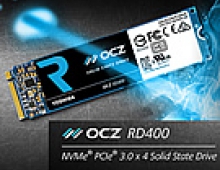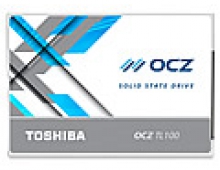
OCZ Z-Drive 6000 And 6300 NVMe U.2 SSDs Released With Dual-port Functionality
Toshiba has made available dual-port functionality on its OC Z-Drive 6000 NVM Express (NVMe) Solid State Drive (SSD) series. The Z-Drive 6000's addition of dual port connection enables two host systems to concurrently access data from the same storage device or provides a redundant access path to the drive, providing features such as High Availability (HA).
 Dual data-paths (or multi-paths) are not new to enterprise applications. Originally, computers were connected to a device using a single data-path, and as this progressed over time, the enterprise community learned that high rates of failures were typically generated from backplanes, host bus adapters, cabling, connectors, etc., primarily due to moving parts and mechanical connections. As a result, redundancy soon became available in terms of RAID for disk drives, data duplication, and other techniques.
Dual data-paths (or multi-paths) are not new to enterprise applications. Originally, computers were connected to a device using a single data-path, and as this progressed over time, the enterprise community learned that high rates of failures were typically generated from backplanes, host bus adapters, cabling, connectors, etc., primarily due to moving parts and mechanical connections. As a result, redundancy soon became available in terms of RAID for disk drives, data duplication, and other techniques.
In the single-path scenario, if the data path from the host to the drive itself is compromised, data cannot be accessed paving the way for the dual-path (or multi-path) concept. Focusing on this multi-path technique from the drive to the host and vice-versa, SCSI devices were the first to implement dual port capabilities using two physical connections. With the advent of Serial Attached SCSI (SAS), dual port connectivity became possible through a single physical connection. Due to its benefits, SAS dual port quickly became a popular configuration. As dual port enables data to be streamed from either port independently, the technique provides fault tolerance for either one of the data paths. This same dual port functionality can now be achieved on PCIe NVMe SSDs.
Dual port enables two data paths within a single host so that two controllers can access the same storage device for redundancy. In another usage, two host systems could also concurrently access the same drive with dual port. If a system failure or power loss occurs where one data path is lost, the available data path continues operation as if no failure had occurred with minimal impact to Quality of Service (QoS).
In addition to the dual port upgrade, the Z-Drive 6000 series now includes feature enhancements such as multiple namespaces, non-binary sector sizes, and self-encrypting drive (SED) with Crypto Erase.
The Z-Drive 6000 NVMe SSD offers sustained I/O performance over 700,000 IOPS for 4K random read, low-latency of 30 ?s, and features selectable power envelopes. In addition to dual port functionality, the U.2-based Z-Drive 6000 SSDs are hot-swappable, distinguishing this next generation PCI Express technology from the traditional add-in-cards of the past. This Z-Drive SSD series is available in 800GB to 6.4TB capacities in both read-intensive and mixed workload models.
Anyone who has deployed final hardware and firmware Z-Drive 6000 SSDs and wish to upgrade to dual port firmware should contact OCZ for more details.
Specifications
| PHYSICAL | Z-Drive 6000 | Z-Drive 6300 | Z-Drive 6300 Max Capacity | Z-Drive 6300 AIC (No dual port and Hot Swap ) |
|---|---|---|---|---|
| Specific Workload | Read-Intensive |
Mixed |
||
| Form Factor | U.2 |
HHHL AIC |
||
| NAND | Toshiba A19nm MLC |
|||
| Interface | NVMe 1.1b Gen 3 X4 (2x2) |
NVMe 1.1b Gen 3 X4 | ||
| Usable Capacities (IDEMA) | 800GB / 1600GB / 3200GB | 800GB / 1600GB / 3200GB / 6400GB | 960GB / 1920GB / 3840GB | 800GB / 1600GB / 3200GB / 6400GB |
| Physical Capacities | 1024GB / 2048GB / 4096GB | 1024GB / 2048GB / 4096GB / 8192GB | 1024GB / 2048GB / 4096GB | 1024GB / 2048GB / 4096GB / 8192GB |
| Serviceability | Hot-swappable (U.2) | Not Available | ||
| Endurance | 1 DWPD / 5 years | 3 DWPD / 5 years | 1 DWPD / 5 years | 3 DWPD / 5 years |
| Warranty | 5 years |
|||
| RELIABILITY/SECURITY | |
|---|---|
| MBTF | 2 millions hours |
| Data Path Protection | End-to-end data protection performs data integrity checks at every juncture where data is transmitted, received, processed and stored |
| Data Encryption | 56-bit AES encryption support |
| Serviceability | Hot-swap support enables serviceability without system downtime |
| Power Loss Protection | Power Loss Protection (PLP) completes in-flight write operations to prevent data loss in the event of a sudden power failure |
| Supported In-Box NVMe Drivers | Windows, Linux, UNIX, Solaris, VMware, UEFI |
| ENVIRONMENTAL | |
|---|---|
| Power Consumption | Idle: 9.0W (typical), Active: 25W (typical) |
| Operating Temperature (Tc) | 0°C ~ 60°C |
| Storage Temperature | -45°C ~ 70°C |
| PERFORMANCE - 6000 Model | 800GB | 1600GB | 3200GB |
|---|---|---|---|
| Sequential Read 128KB | 2200 MB/s | 2700 MB/s | 2700 MB/s |
| Sequential Write 128KB | 1200 MB/s | 1800 MB/s | 1700 MB/s |
| Random Read 4KB | 575,000 IOPS | 700,000 IOPS | 700,000 IOPS |
| Random Write 4KB | 110,000 IOPS | 150,000 IOPS | 140,000 IOPS |
| Latency Read (@ QD=1, Aligned, Random 4KB) |
120 μs (typical) | ||
| Latency Write (@ QD=1, Aligned, Random 4KB) |
30 μs (typical) | ||
| Endurance (per life, w/4KB aligned random write) |
1 DWPD | ||
| PERFORMANCE - 6300 Model | 800GB | 1600GB | 3200GB |
| Sequential Read 128KB | 2000 MB/s | 2700 MB/s | 2700 MB/s |
| Sequential Write 128KB | 900 MB/s | 1500 MB/s | 1400 MB/s |
| Random Read 4KB | 570,000 IOPS | 700,000 IOPS | 700,000 IOPS |
| Random Write 4KB | 85,000 IOPS | 140,000 IOPS | 125,000 IOPS |
| Latency Read (@ QD=1, Aligned, Random 4KB) |
120 μs (typical) | ||
| Latency Write (@ QD=1, Aligned, Random 4KB) |
30 μs (typical) | ||
| Endurance (per life, w/4KB aligned random write) |
3 DWPD | ||
| PERFORMANCE - 6300 Max Capacity Model | 960GB | 1920GB | 3840GB |
| Sequential Read 128KB | 2000 MB/s | 2700 MB/s | 2700 MB/s |
| Sequential Write 128KB | 900 MB/s | 1500 MB/s | 1400 MB/s |
| Random Read 4KB | 570,000 IOPS | 700,000 IOPS | 700,000 IOPS |
| Random Write 4KB | 30,000 IOPS | 45,000 IOPS | 45,000 IOPS |
| Latency Read (@ QD=1, Aligned, Random 4KB) |
120 μs (typical) | ||
| Latency Write (@ QD=1, Aligned, Random 4KB) |
30 μs (typical) | ||
| Endurance (per life, w/4KB aligned random write) |
1 DWPD | ||





















